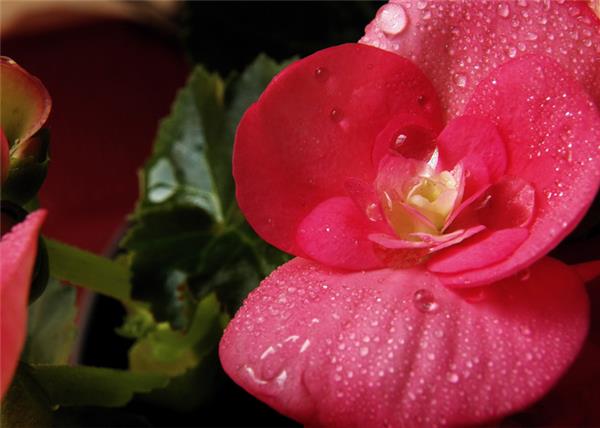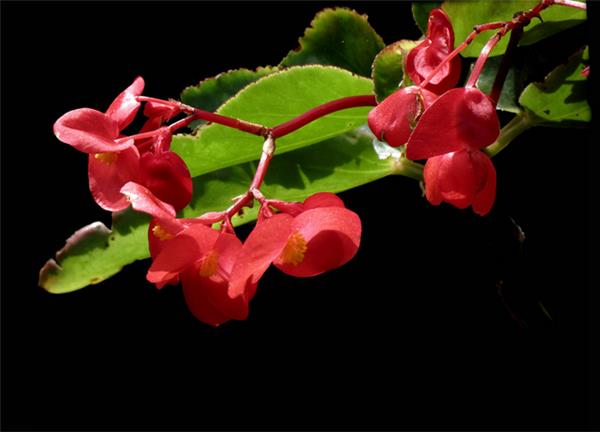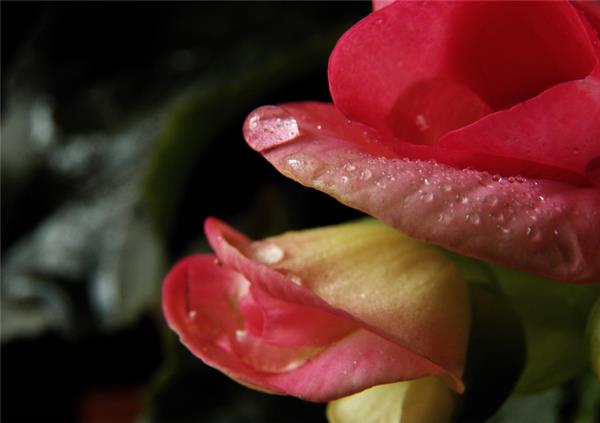What is the reason for the yellowing of begonia leaves in four seasons?
Flower friends in the breeding process will more or less affect the healthy growth of four seasons begonia, such as four seasons begonia leaves yellowing, then what is the reason for the yellowing of four seasons begonia leaves? I don't know what to do

What is the reason for the yellowing of begonia leaves in four seasons?
The main results are as follows: 1. Environmental mutation leads to yellowing of begonia leaves: environmental mutation includes discomfort to the soil environment. Begonia likes flowers and trees in acidic soil, and the leaves turn yellow due to the alkalinity of the soil.
Solution: the grass can be watered with soaking water and a little ferrous sulfate is applied, and the leaves will turn green.
2. Too much watering leads to the yellowing of the leaves of the four seasons begonia (water yellow): the young leaves on the top of the flowers are yellowish, the old leaves are also gradually yellowing, and the new shoots are shrinking. This is due to long rain or too much watering, too wet in the basin, lack of oxygen in the soil, and root rot.
Solution: should often loosen the soil, control watering, avoid heavy rain spray.
3. Long-term lack of water caused the leaves of four seasons begonia to turn yellow (dry yellow): the leaf color on the top of the soil was normal, and the lower leaves gradually dried yellow and fell off upward. This is due to the fact that the pan soil is too full or lack of water for a long time, resulting in the aging of the lower leaf branches.
Solution: should be properly watered to keep the soil moist.

4. Exposure leads to yellowing of begonia leaves (burning yellow): Begonia likes the flowers in a cool environment. If they are directly exposed to the sun, the leaves will also turn yellow and fall off.
Solution: write the solution here and transplant it in a cool and ventilated place.
5. The dry air leads to the yellowing of the leaves of the four seasons begonia: the four seasons begonia likes warmth and is not resistant to cold. Grow well in a slightly humid environment and moist soil. Afraid of dry environment and waterlogging, dry air will directly cause the leaves to turn yellow.
Solution: enhance indoor air mobility.
6. Lack of sunlight leads to yellowing of Begonia leaves (lack of light yellow): potted flowers are often kept indoors, flowers are easy to yellow leaves.
Solution: increase the lighting time appropriately.

7. The high temperature leads to the yellowing of the leaves of the four seasons begonia: the four seasons crabapple likes the semi-overcast environment, which will scorch the leaf edge and curl the leaves if it is exposed to high temperature in the middle of summer.
Solution: lower the temperature in the transplant room.
8. The low temperature leads to the yellowing of the leaves of the four seasons begonia: the low temperature makes the growth slow and the leaves turn yellow.
Solution: when the temperature is low in winter, it can be placed in a sunny place.
9. Excessive fertilization of four seasons begonia leads to yellowing of leaves (fat yellow): too much fertilization, concave and convex leaves of flowers, thickening of new leaves and yellowing of old leaves.
Solution: should be frequently watered, suspend fertilization, the pot can be sprinkled with vegetable seeds, after emergence, pull out, in order to consume fertilizer in the basin, so that flowers and trees return to normal growth.

10. The long-term lack of fertilizer leads to the yellowing of leaves (lack of fat yellow): the leaves of flowers are thin and yellow, which is due to the fact that the big pots of flowers are small or have not been changed for a long time, soil change and lack of fertilizer.
Solution: should gradually increase water and fertilizer, timely change the basin.
11. Rotten roots lead to yellowing of begonia leaves: excessive dampness in the basin soil will lead to rotten roots and yellowing leaves.
Solution: if it is light, control the watering immediately and move the basin
12. Diseases and insect pests lead to the yellowing of the leaves of Begonia Siji: the plants affected by stem rot are initially dark spots at the base of the stem near the soil surface, expand and become brown, contract and rot. The pathogen infected the leaves and caused dark green water-stained spots, while the infected petioles showed brown rot. The leaves turn yellow.
Solution: at the initial stage of the disease, 95% Luheng No. 1 fine product 3000 times liquid or 20% methyl rifampicin EC 1200 times solution, 50% Likuling wettable powder 1000 times solution, potassium permanganate 1200-1300 times solution.
Related
- Wuhan Hospital Iron Tree Blooming Result Was Instantly Frightened by the Gardener Master
- Which variety of camellia is the most fragrant and best? Which one do you like best?
- What is the small blue coat, the breeding methods and matters needing attention of the succulent plant
- Dormancy time and maintenance management of succulent plants during dormancy
- Minas succulent how to raise, Minas succulent plant pictures
- What are the varieties of winter succulent plants
- How to raise succulent plants in twelve rolls? let's take a look at some experience of breeding twelve rolls.
- Attention should be paid to water control for succulent plants during dormant period (winter and summer)
- Watering experience of twelve rolls of succulent plants
- Techniques for fertilizing succulent plants. An article will let you know how to fertilize succulent plants.



